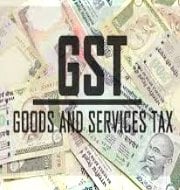Union Government aims to roll out GST from April 1, 2017
The Union Government has set the ambitious target to roll out of the Goods and Services Tax, (GST) from 1st April 2017.
It was announced by Union Finance Minister Arun Jaitley after unveiling a detailed road map for GST implementation.
This announcement was made after Rajya Sabha had passed The Constitution (122nd Amendment) (GST) Bill, 2014.
How would be GST administered in India?
- There will be two components of GST – Central GST (CGST) and State GST (SGST) in order to comply with federal structure of India.
- Thus both Centre and States have authority to simultaneously levy GST across the value chain. GST will be levied on every supply of goods and services.
- States will levy and collect the State Goods and Services Tax (SGST) on all transactions within a State and Centre will levy and collect Central Goods and Services Tax (CGST).
- The credit of SGST paid on inputs will be allowed for paying the SGST on output. No cross utilization of credit would be permitted.
- Similarly, the input tax credit of CGST will be available for discharging the CGST liability on the output at each stage.
What are the benefits of GST?
For business and industry
- Uniformity of tax rates and structures: GST will ensure that indirect tax rates and structures are uniform across the country.
- Thereby it will increase certainty and ease of doing business i.e. make it tax neutral, irrespective of the choice of place of doing business in the country.
- Removal of cascading: The GST will ensure minimal cascading of taxes (i.e. tax on tax) as it will have a system of seamless tax-credits throughout the value-chain, and across boundaries of States. It will help to reduce hidden costs of doing business.
- Easy compliance: The GST regime will have a robust and comprehensive IT system. Therefore, all tax payer services such as registrations, payments, returns, etc. will be available to the taxpayers online. Thus it would make compliance easy and transparent.
- Improved competitiveness: It will reduce transaction costs of doing business that will eventually lead to an improved competitiveness for the trade and industry.
- Gain to manufacturers and exporters: The subsuming of major Central and State indirect taxes in GST would reduce the cost of locally manufactured goods and services.
- It will increase the competitiveness of Indian goods and services in the international market and give boost to Indian exports.
For Central and State Governments
- Simple and easy to administer: GST will replace multiple indirect taxes at the Central and State levels into single regime.
- GST backed with a robust end-to-end IT system will be simpler and easier to administer than all other indirect taxes of the Centre and State levied so far.
- Better controls on leakage: The robust IT infrastructure of GST regime will result in better tax compliance that will curb leakages and incentivize tax compliance by traders.
- Higher revenue efficiency: GST will lead to higher revenue efficiency as it is expected to decrease the cost of collection of tax revenues of the Government.
For the consumer
- Single and transparent tax proportionate to the value of goods and services: Under GST regime there will be only one tax from the manufacturer to the consumer. Thus, it will remove many hidden taxes leading to transparency of taxes paid to the final consumer.
- Relief in overall tax burden: The overall tax burden on most commodities will come down because of efficiency gains and prevention of leakages which will benefit consumers.
Month: Current Affairs - August, 2016


